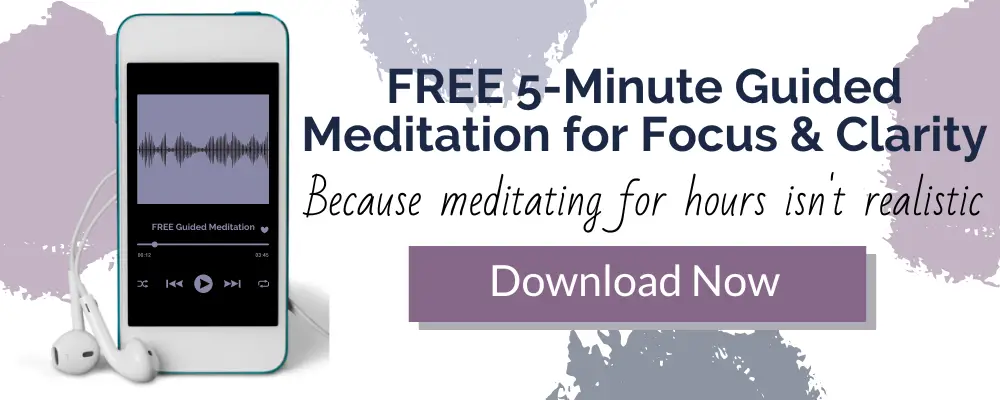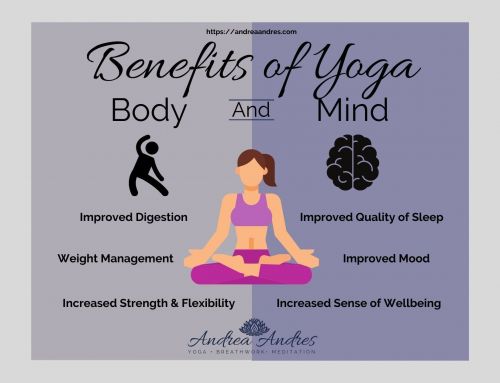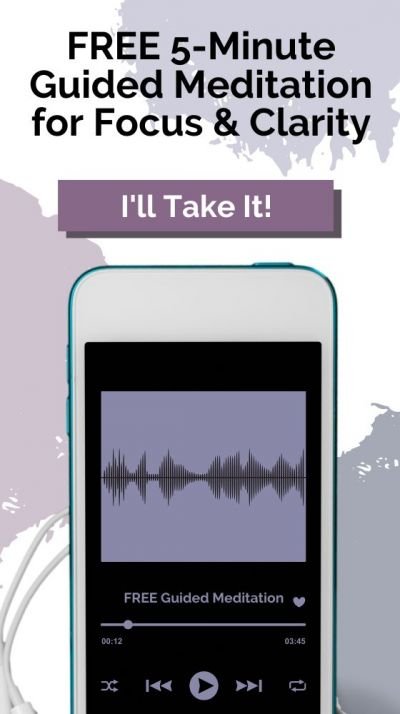A Yoga Strap: Do You Really Need One?
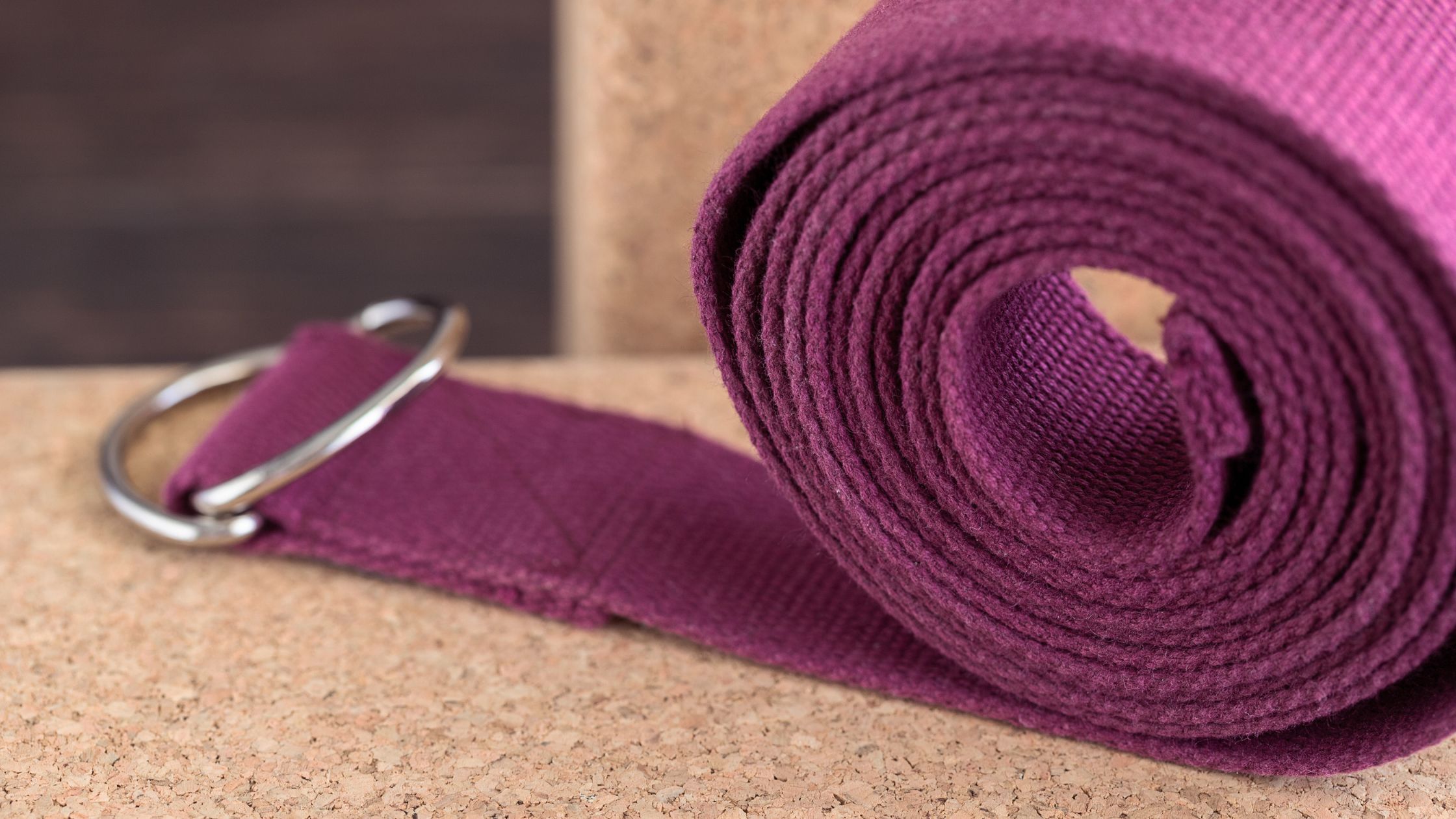
This post contains affiliate links. Please read my Disclaimer & Disclosure Policy for more information.
Regardless of if you are a beginner, or if you have been doing yoga for years, using a yoga strap is a great way to improve the effectiveness of your practice. Adding props can assist in building increased strength, improving flexibility, and deepening poses. Props should be viewed as a set of essential tools.
Yoga straps are one of the first tools you should think about purchasing. They are extremely inexpensive and will do so much for your practice by improving your alignment and flexibility.
How a Yoga Strap Can Help You
1. Lengthen Reach
Yoga straps allow you to lengthen your reach in order to keep proper posture. Often when we aren’t flexible enough we compromise posture and correct form to get into a pose. When this is the case we end up rounding our back and tensing our shoulders to desperately try to contort into a pose. Forward fold is a great example of a pose where a strap can help maintain a relaxed form in the pose.
Straps also help lengthen our reach in poses where we need to bind our arms. If you lack flexibility in your shoulders it can make binding poses completely inaccessible. Using a strap in this instance will allow you to gradually build flexibility in order to eventually be able to get into your arm bind on your own.
Seated Forward Fold
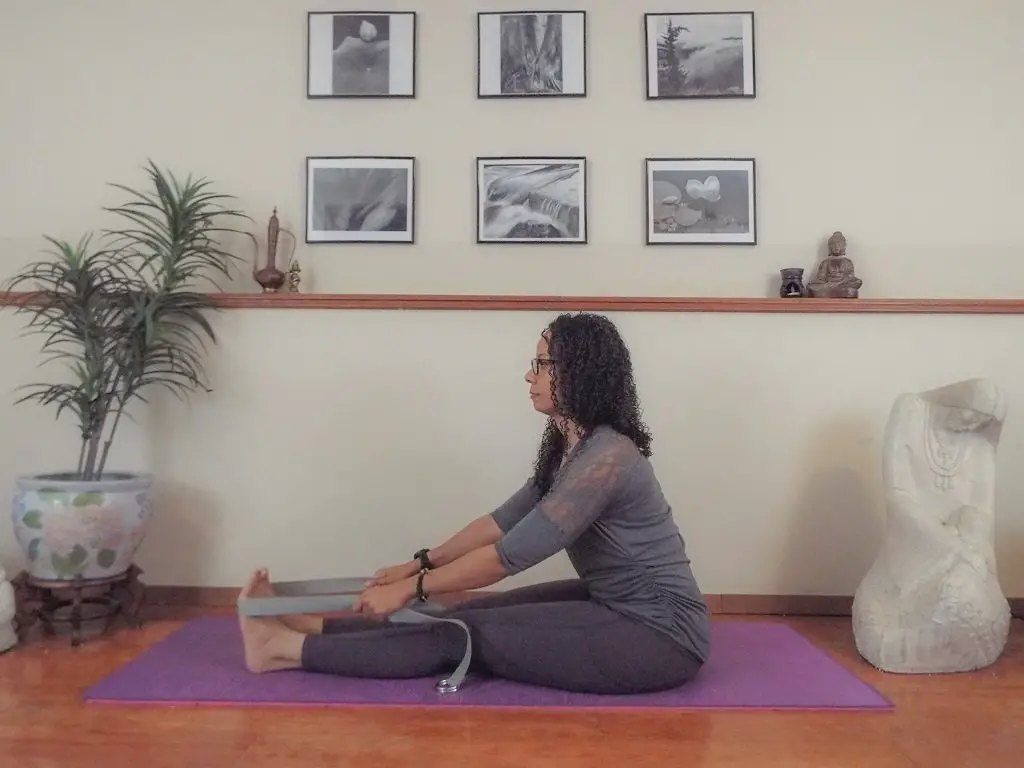
Cow Face Arms
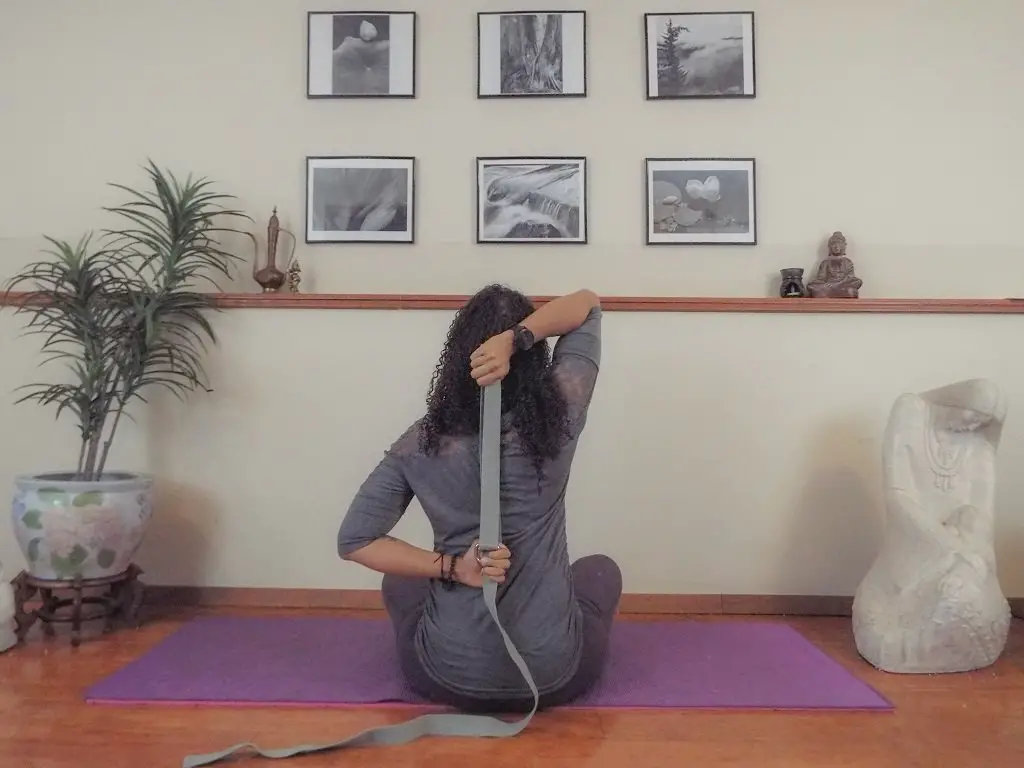
2. Aid In Alignment
A strap can be very helpful in correcting your alignment. In poses like chaturanga, down dog, crow, forearm stand, and handstand it’s important to keep your elbows tucked in close to the body. To help remind your body to keep your elbows tucked, and increase proprioception, you can form a loop and place it around your arms.
Chaturanga
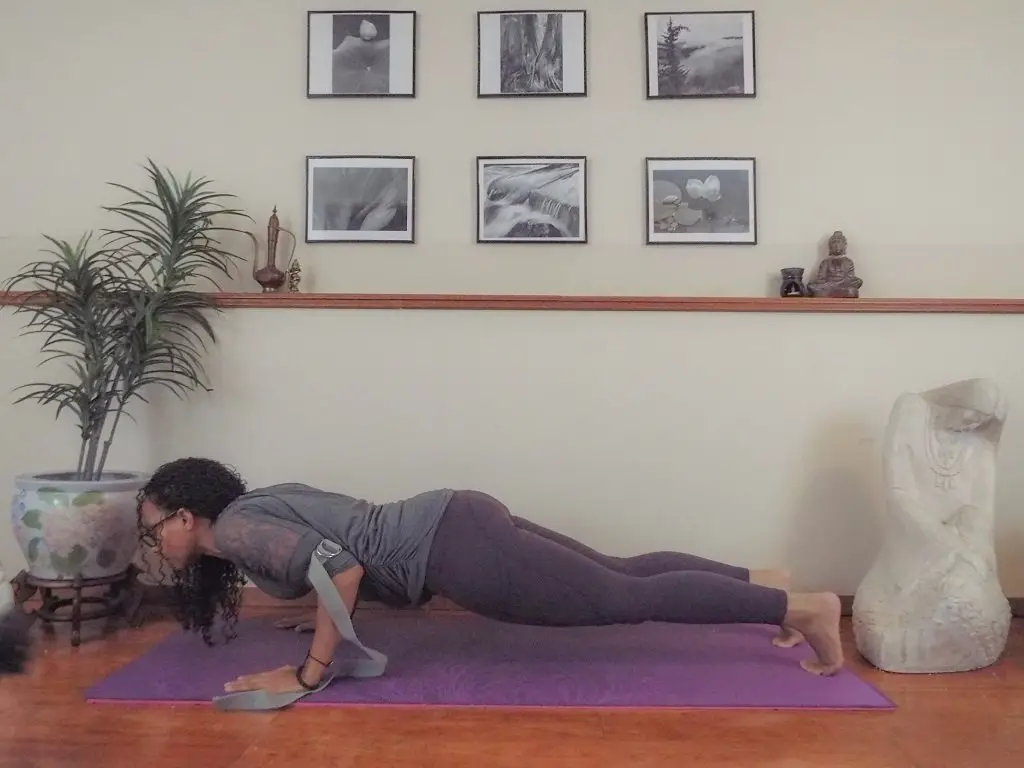
Crow Pose
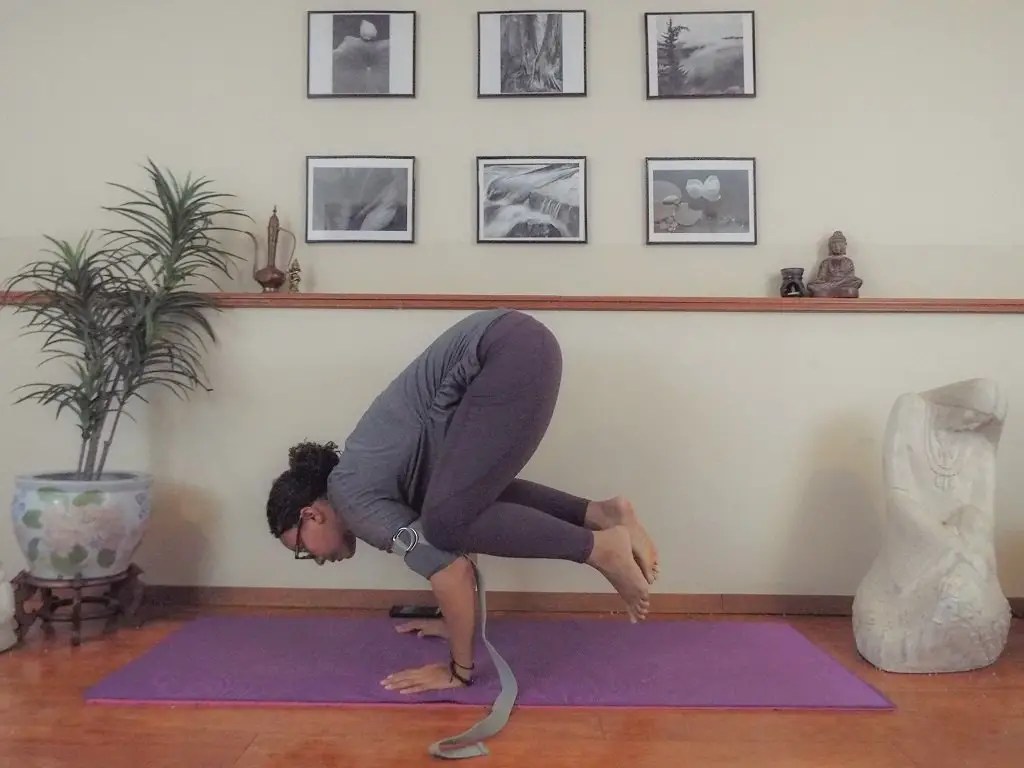
3. Support & Release
Binding a strap and using it for support can allow you to relax and fully release into a pose. For example, you can use a strap in supine bound angle to support your knees, and allow the lower back to release. Similarly, if you use a strap around the upper legs in legs up the wall pose you will allow the legs and lower back to release and relax fully.
Supine Bound Angle
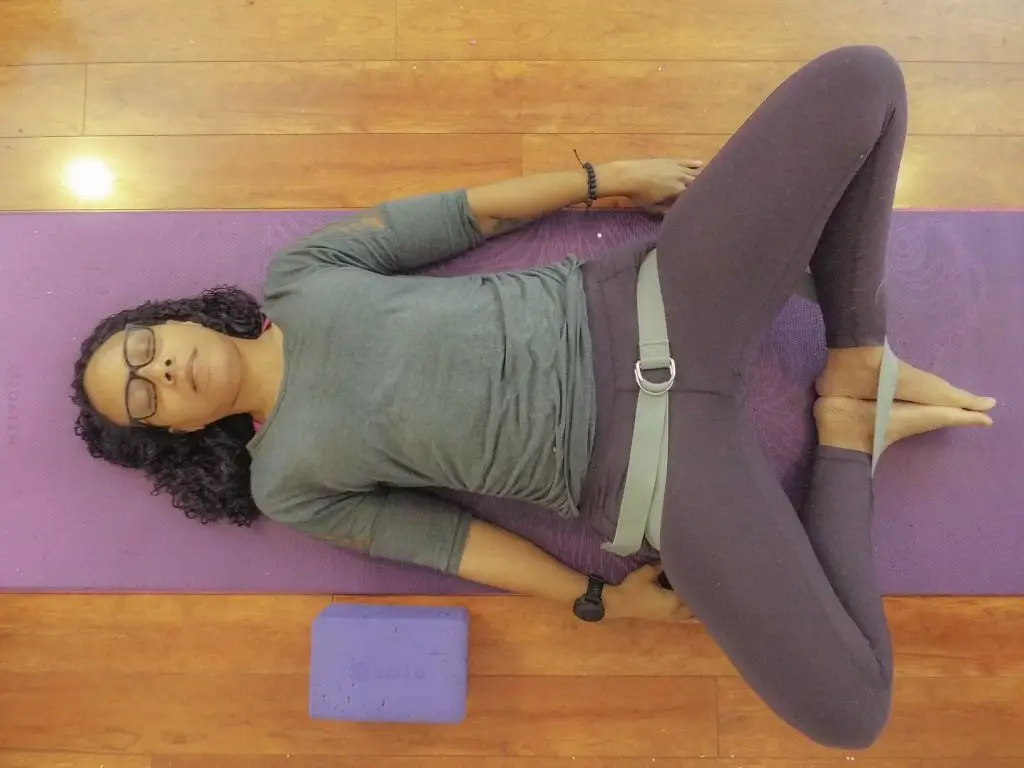
Legs Up the Wall
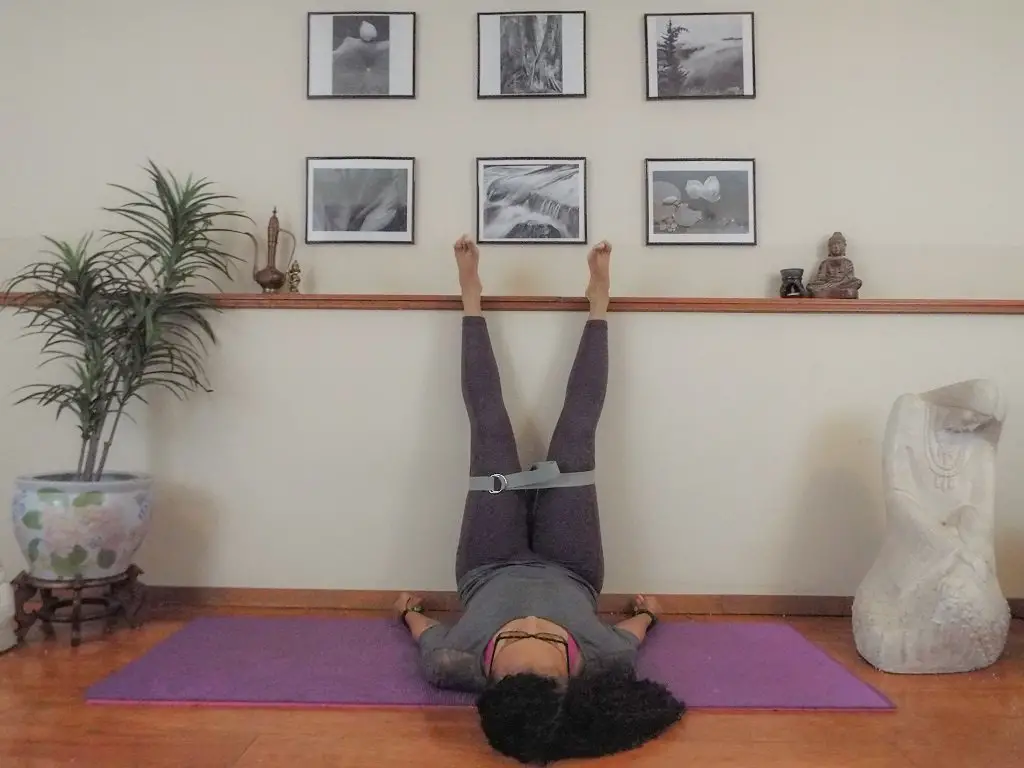
4. Brace & Balance
Yoga straps can also help with your balance by reducing tension through the body, extending your reach, and giving you something to brace against. Boat pose is a great example of a pose where a yoga strap helps to support your balance. You can either grasp the strap in your hands and place it under the balls of your feet, or create a long loop going around the balls of your feet then around your back.
In standing poses like extended hand to big toe pose or dancer pose you can have a hard time balancing if you don’t have enough flexibility in your extended leg. Using a strap allows you to stay relaxed through your standing leg and the rest of your body.
Boat Pose
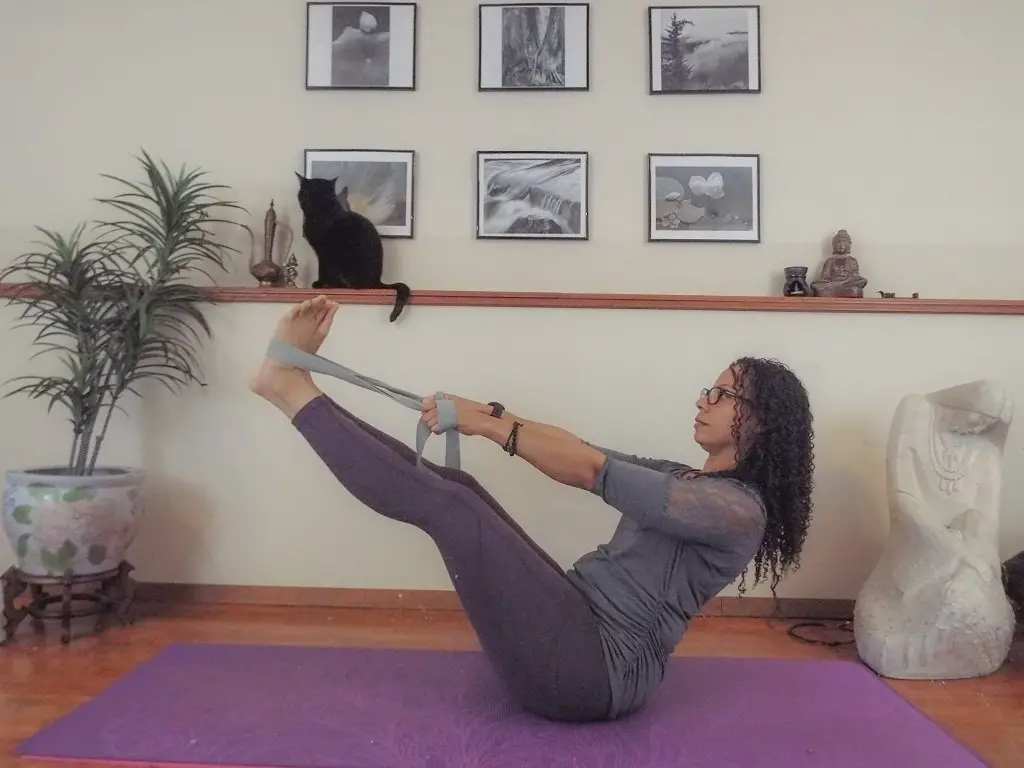
Extended Hand to Bid Toe
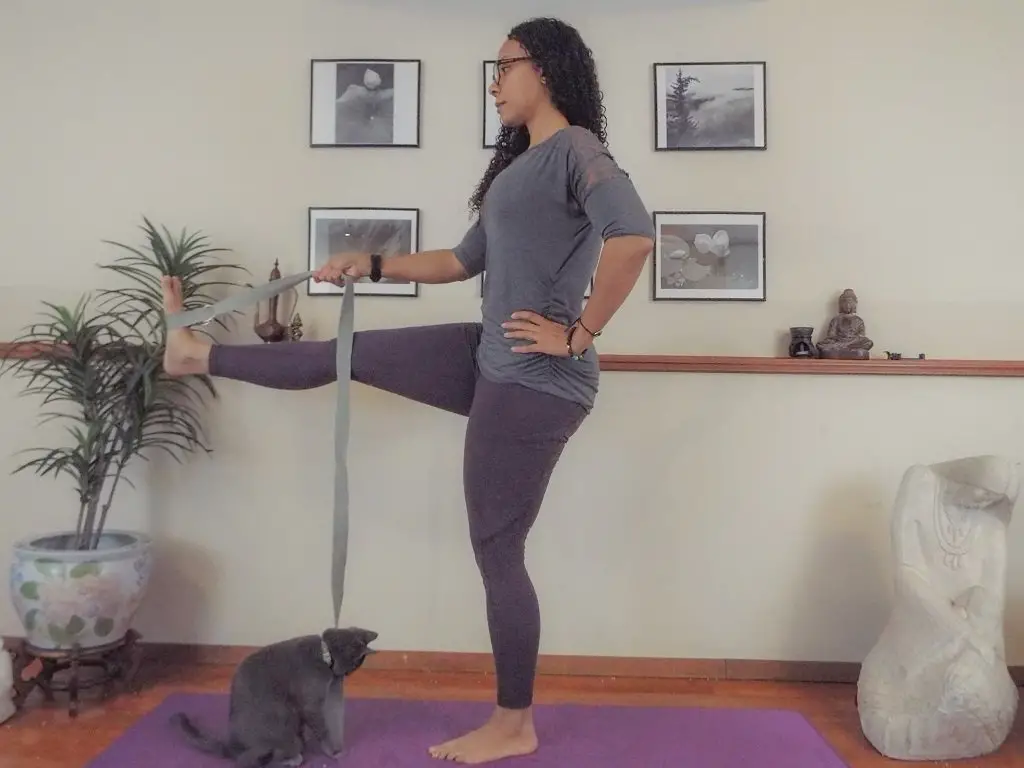
Yoga Strap Types
Deciding what type of strap is right for you comes down to personal preference. I’ll cover information on the most common types of yoga straps so you can select a yoga strap that’s right for your practice.
1. Standard Yoga Strap
Standard yoga straps are made of a long strap with a cinch at one end. Staps typically come in lengths of 6′, 8′, and 10′. The material of the strap itself is usually cotton or hemp. The most important difference between standard yoga straps is the cinch. The cinch allows you to adjust the main length of the strap, and to form a loop. Cinches can be metal d-rings, plastic, or quick release.
- Metal D-Ring Yoga Strap
Metal d-rings allow for smooth adjustment of your strap. The metal is smooth so it glides easily over the strap material. This makes it easy to fine-tune adjustments with one hand. The only downside with this type of strap is that the buckle may slip if you have a lot of pressure against the loop.
The strap that I find myself using the most often in my own practice is this Gaiam metal d-ring strap that you can find here>>.
- Plastic Cinch Yoga Strap
Straps with plastic cinches provide a very strong hold when fastened. The plastic cinch doesn’t slide easily over the strap so it provides an extremely secure hold.
When choosing a plastic cinch strap it’s important to choose a high-quality product to ensure the plastic is durable and will last. This strap from Hugger Mugger is a great choice. This is a well know yoga brand known for producing high-quality products. You can check it out here>>.
- Adjustable Buckle/ Easy Feed Yoga Strap
These yoga straps are very similar to the d-ring straps except there is a sliding bar in the middle of the cinch. This allows the cinch to hold securely while still allowing for easy adjustment.
When choosing a yoga strap with this buckle design avoid chinches with a plastic middle bar. Manduka makes a strap with an all-metal interlocking cinch. You can check it out here>>.
- Quick Release Yoga Strap
Quick-release straps are similar to the plastic cinch straps, but with the addition of a snap shut clasp. These straps hold extremely secure and are not easily adjusted with one hand. The difference is that the clasp can be quickly released when needed.
Again with a plastic strap make sure to choose a brand that makes a high-quality product. You can check out the Hugger Mugger quick release strap here>>.
2. Stretching Strap
While stretching straps aren’t the most traditional option for yoga, they allow for a lot of options. A stretch strap is a log strap with a series of loops sewn into the length of the strap. You can place your hands in these loops and use them as handholds, place the loops around the ball of the foot, and you can use the flat side of the strap.
You can get details on a quality stretch strap here>>.
3. Infinity Yoga Strap
Infinity yoga straps are the new kid on the block. Their design is extremely simple, there are two loops with no buckle. They come in three sizes, and in a stretch or non-stretch material. Despite its simple design, it maintains the functionality of a traditional strap.
For more information on the design, and video showing the uses click here>>
This article just scratches the surface when it comes to the ways you can incorporate a yoga strap into your practice. The most important thing is to make sure you get a strap long enough for your purpose. You can start by using the tie from a robe or even just a regular belt to feel out what you need.
For information on how to get started with your own yoga practice read my previous blog article How to Start Your Yoga Practice in 4 Easy Steps.
As always before starting any new physical practice be sure to check with your doctor.

